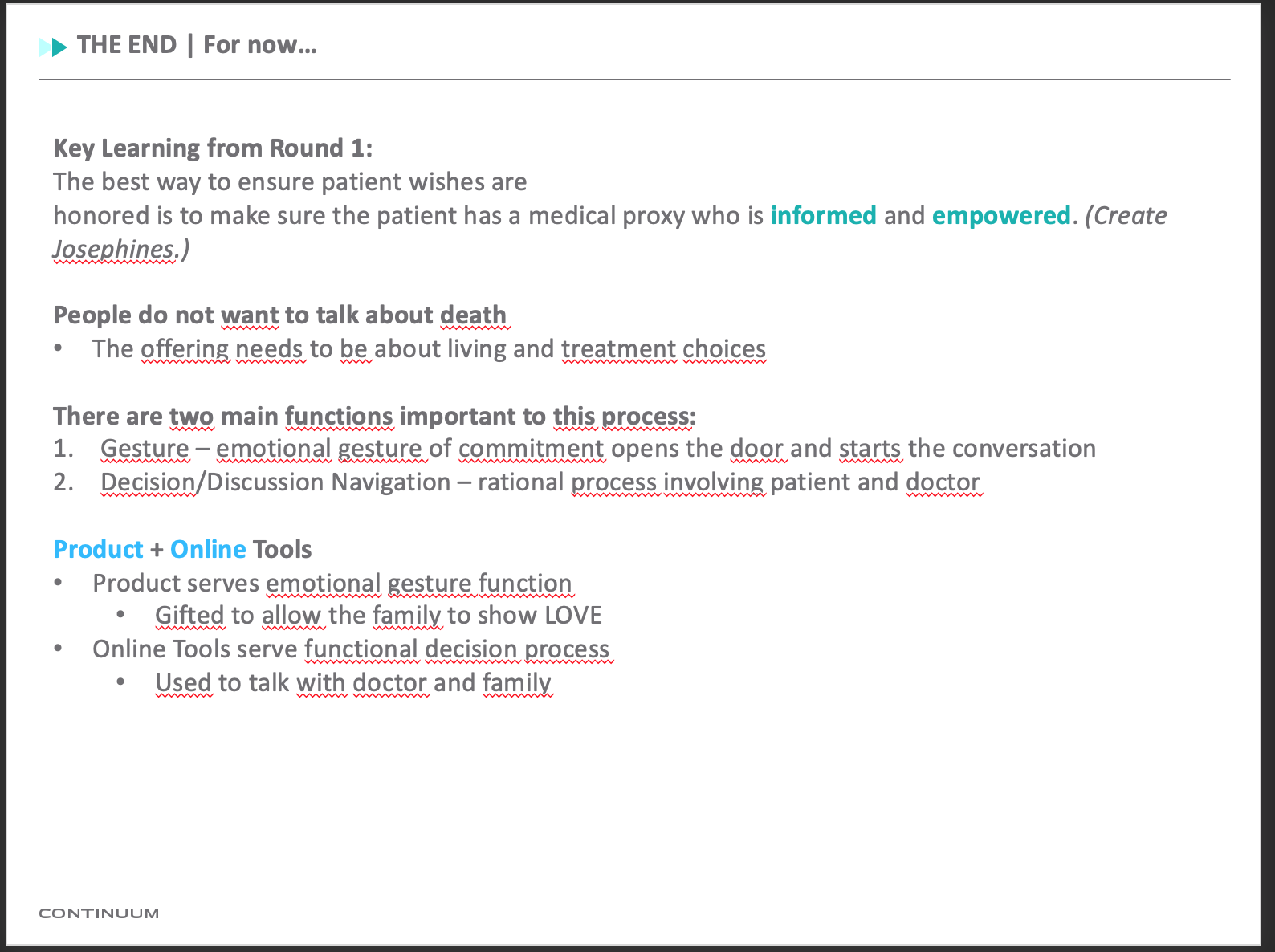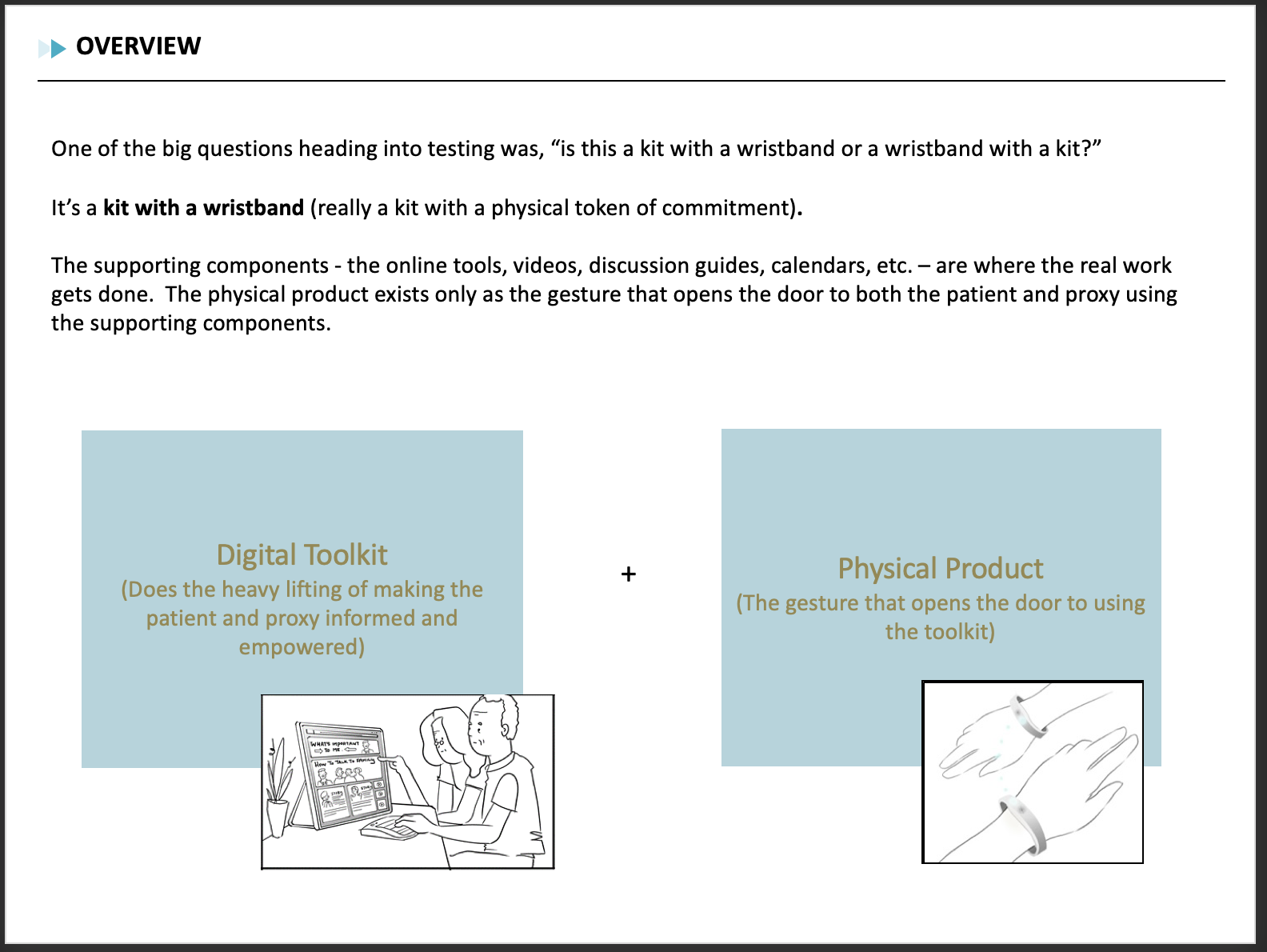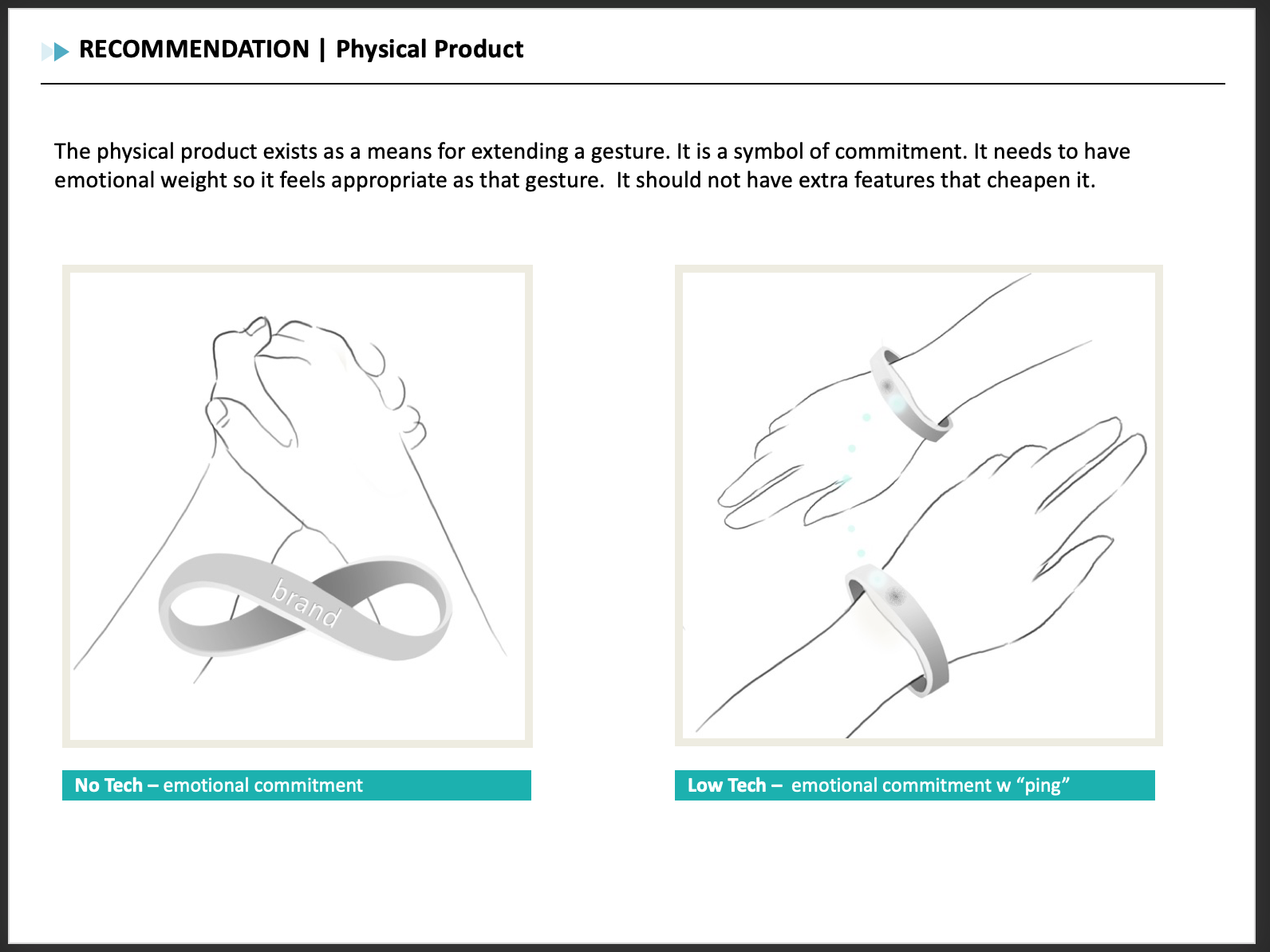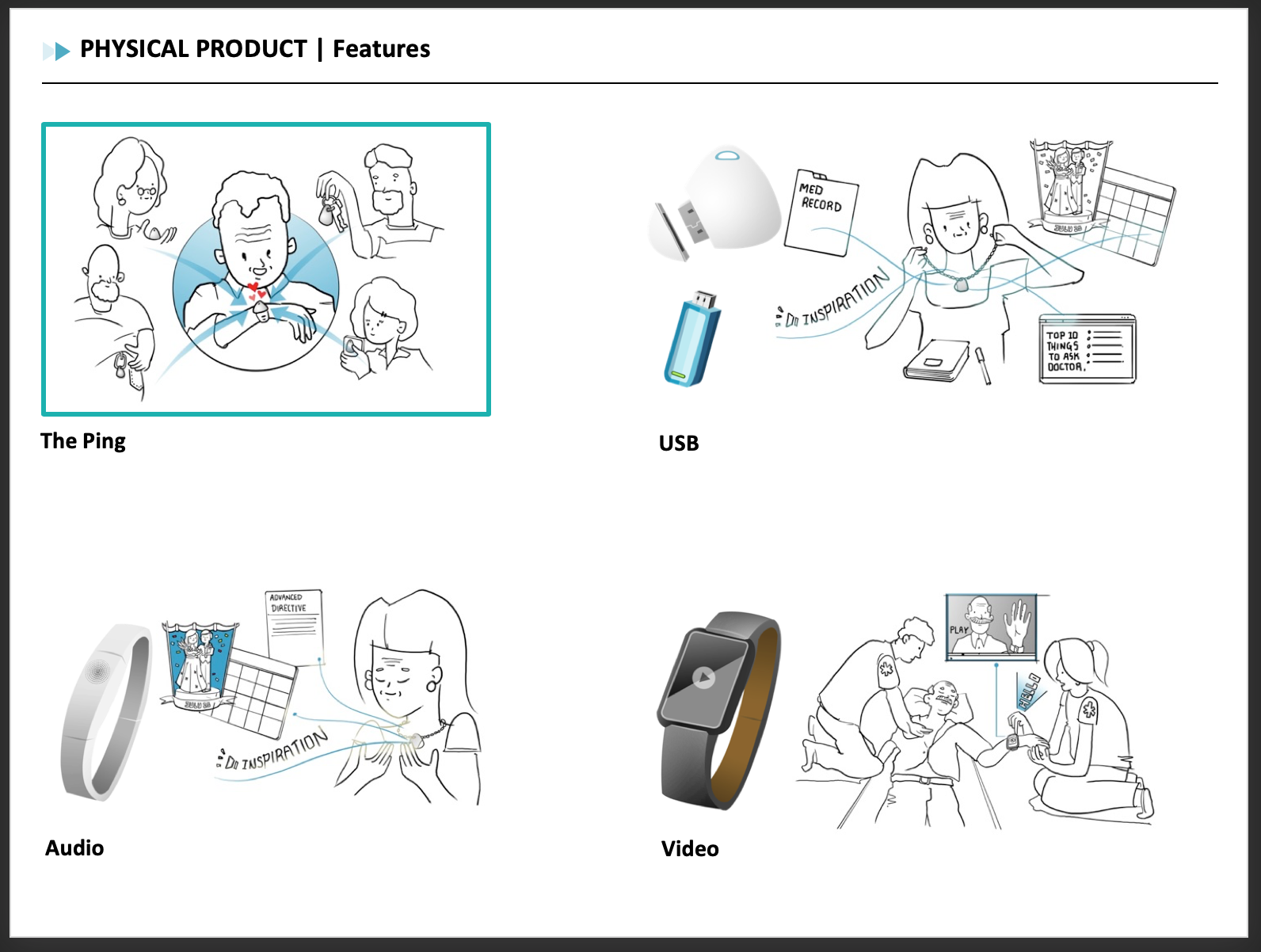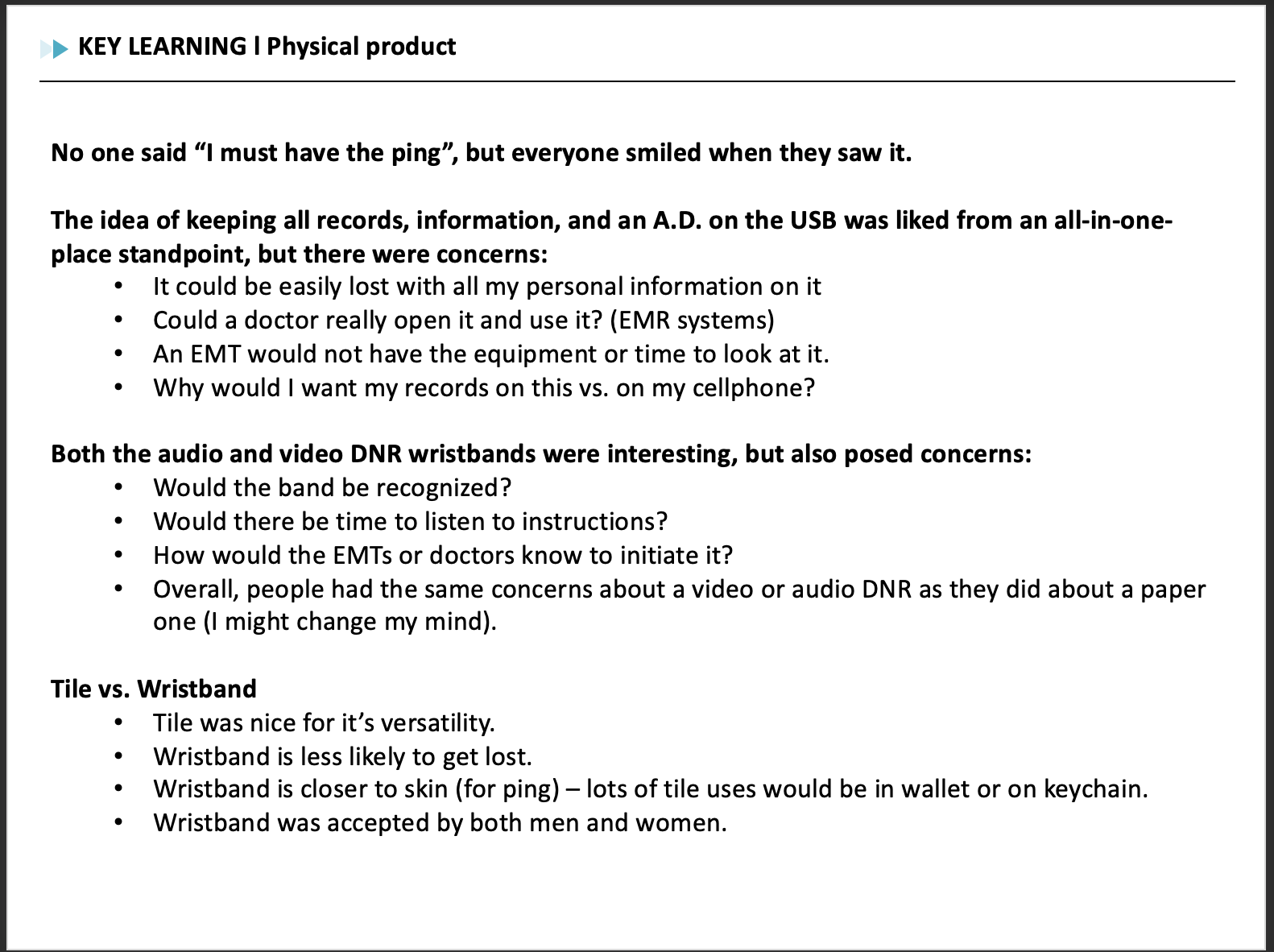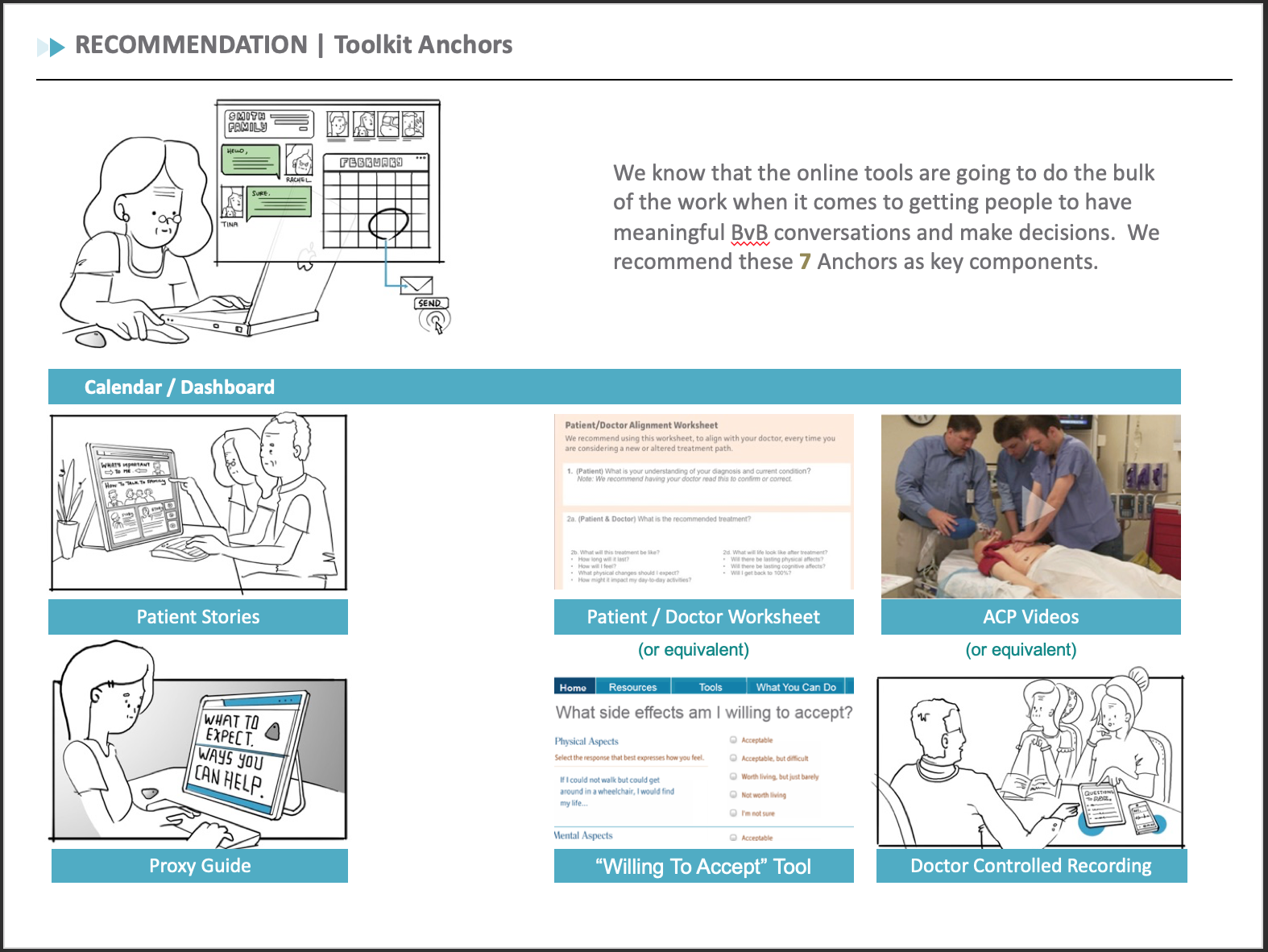Overview
While working at Continuum as a design strategy intern, my team was tasked with reimagining end-of-life-care with the goal of reducing the number of people who die in the ICU.
Duration
6 months
Role
Research, Ideation, User Testing, Project manager, Strategist
Collaborators
Preliminary Research
Research
Performed secondary research to understand the current end-of-life landscape, as well as in-depth interviews with over 90 participants close to end-of-life care including nurses, social workers, doctors, people with terminal illnesses and family members of people who had died.
Findings
Out of our research we were able to create a patient journey map that allowed us to understand how people are currently experiencing this process and where there might be potential touch points to intervene and improve the experience.
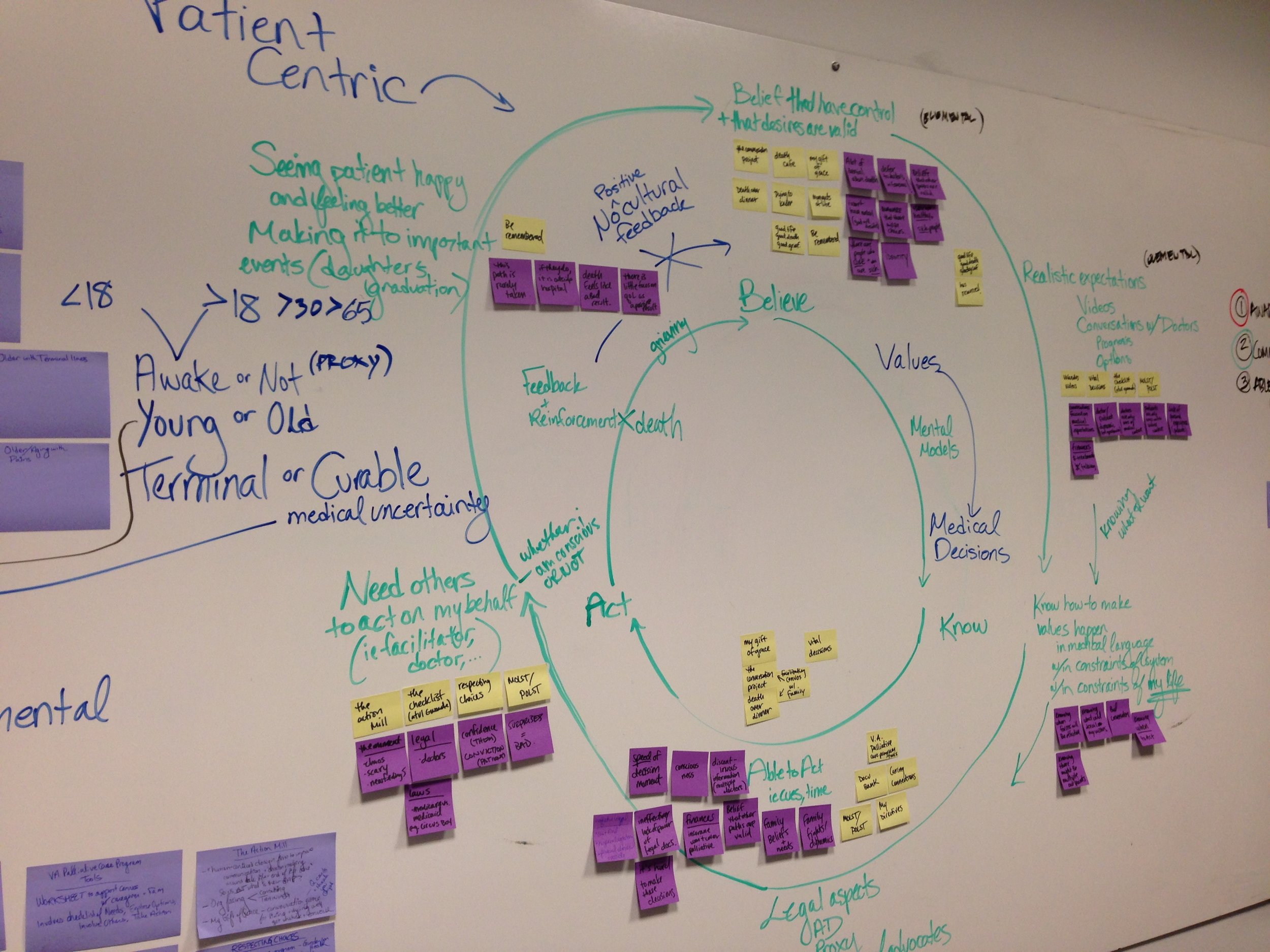
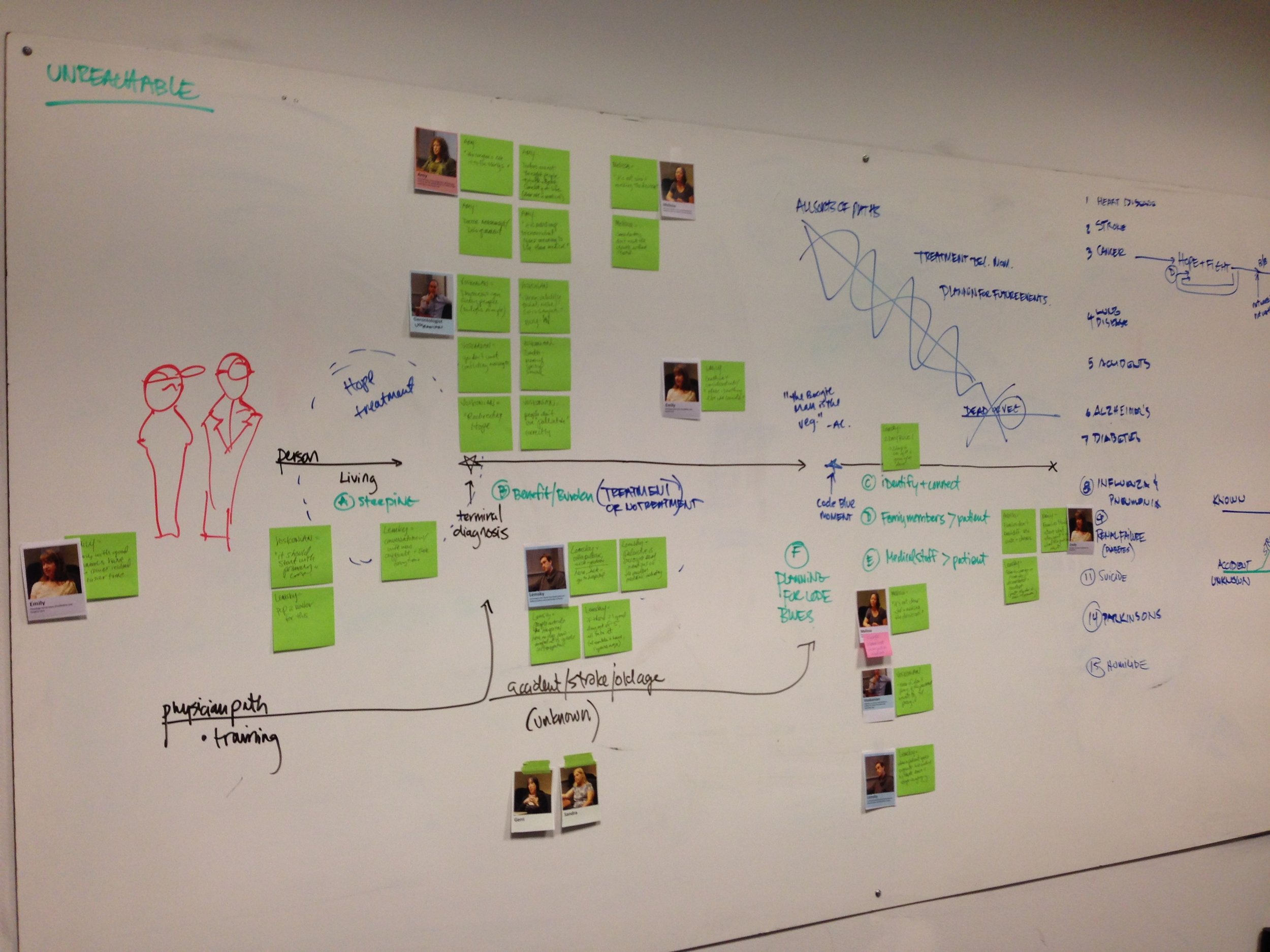


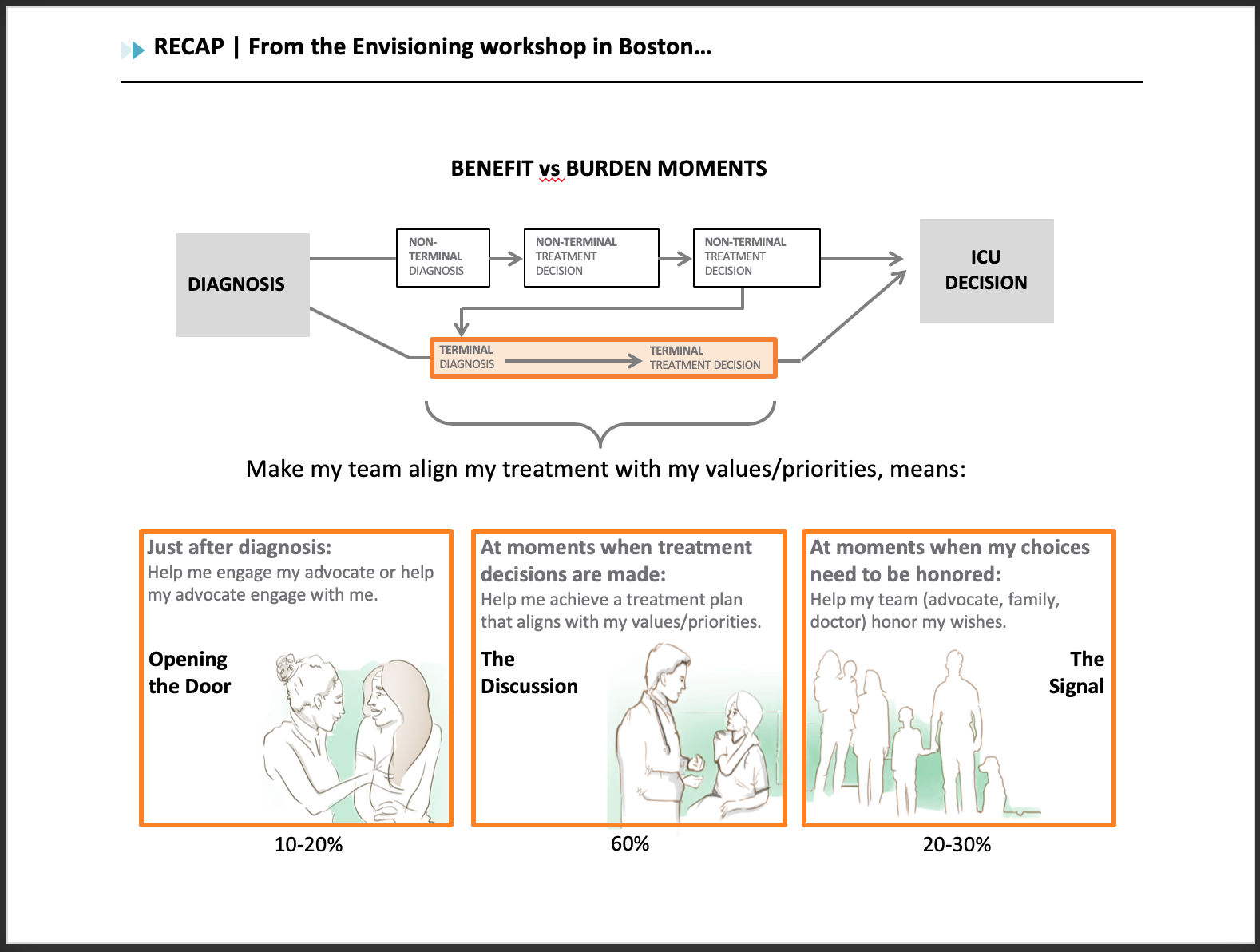
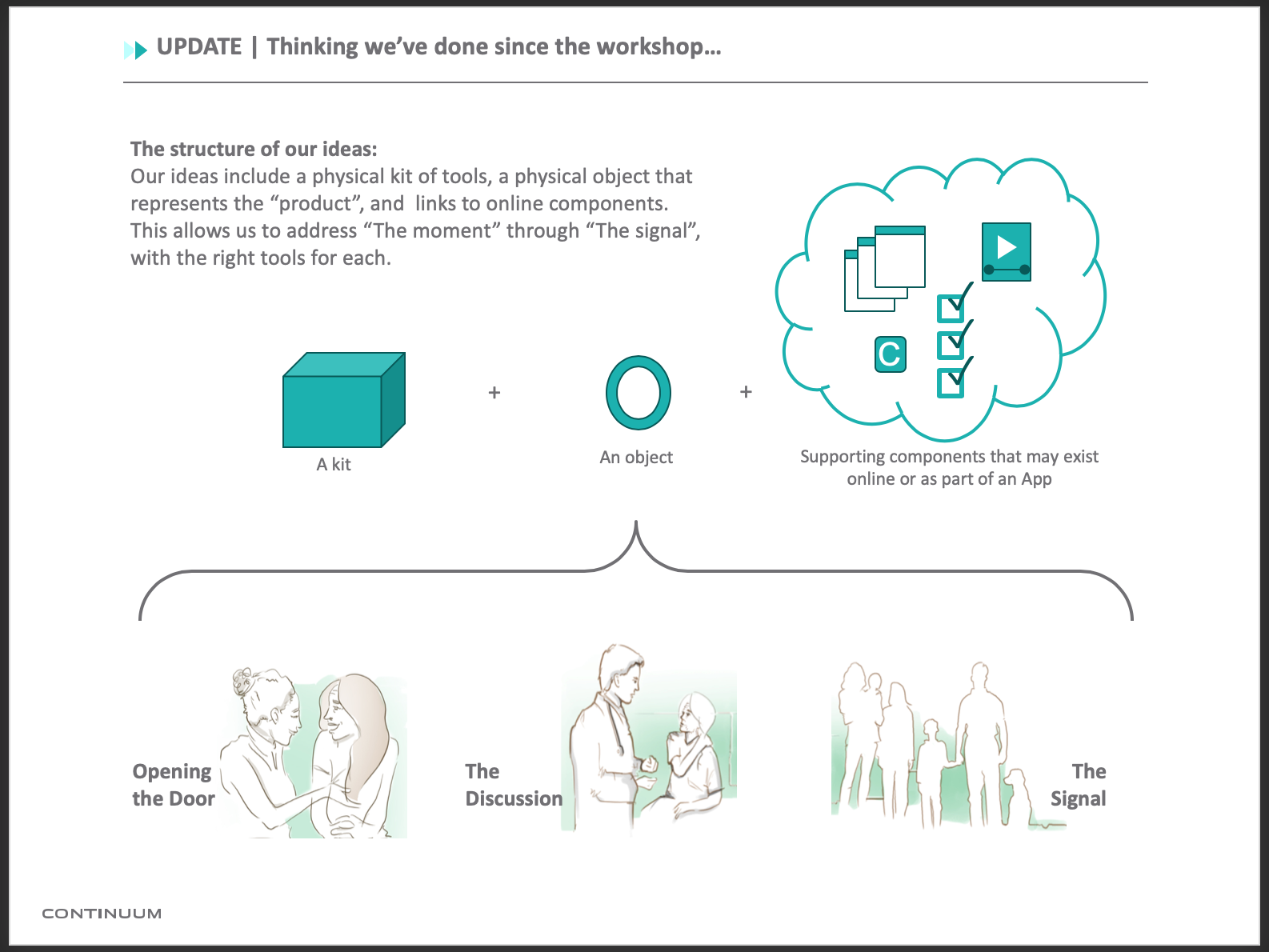


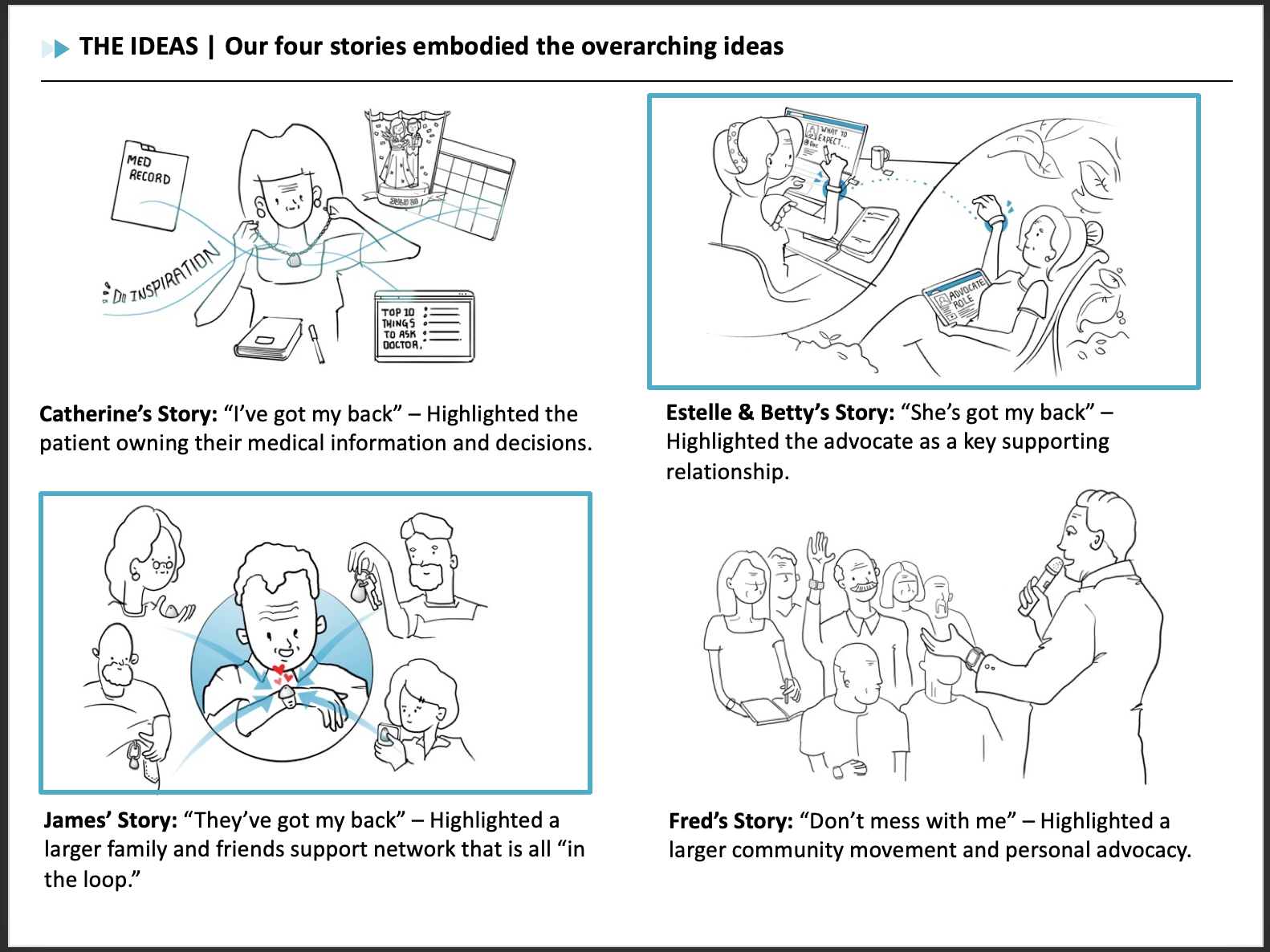
Ideation and Prototype
Ideation
After synthesizing our research and ideating around both our findings and inspiration from the death rituals of other cultures, we imagined that our solution would have to have both some practical digital assets to help guide people through the process AND some kind of object that could serve as an emotional touch point.
Prototype
Our first round of prototype testing was based on the creation of storyboards and mock-ups of offerings in order to test the concept before building any complicated products or digital assets.
To do so we created four different storyboards related to four different patient archetypes and focused especially on the two most common ones that also need the most help managing their care.
Learnings after User Testing
Feedback
We tested our storyboard with patient and proxy pairs since they were our targeted user base and received a lot of positive feedback. The crucial pieces we learned were that the physical token was important as an emotional touch point and that a consolidation of digital tools was interesting, but they were most interested in tools that would help them relate to their loved ones and see how other people managed their situation.
Next Steps
The next steps on this project were to present these findings to the client and see how they wanted to proceed in refining their offering.
